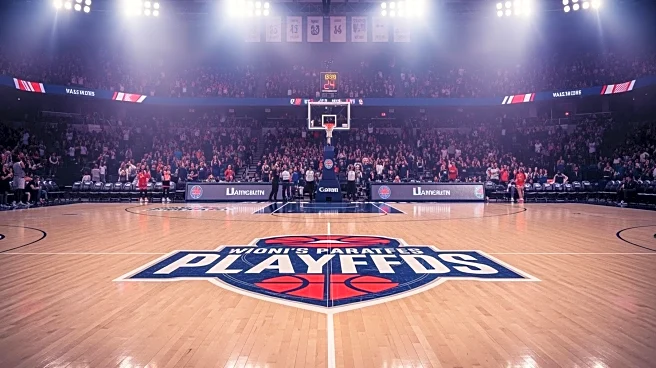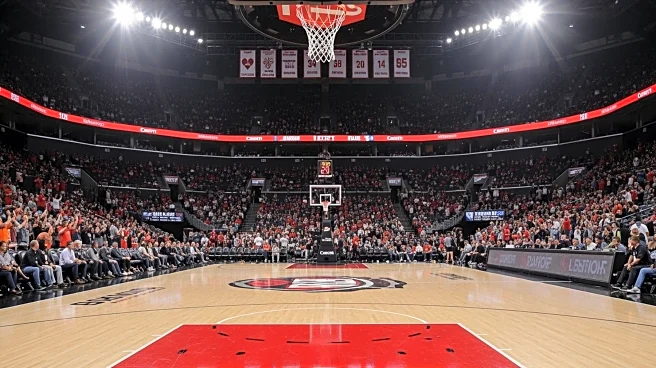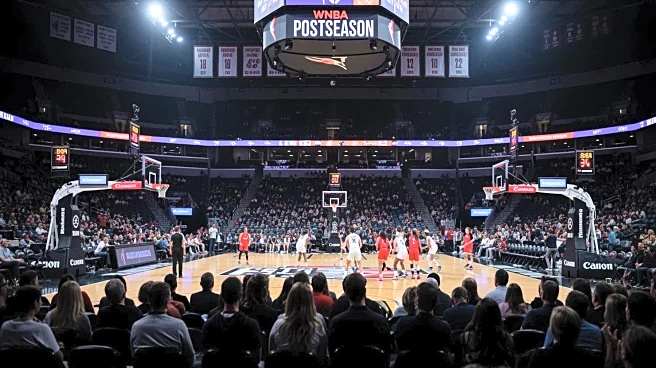What's Happening?
ESPN has announced record-breaking TV ratings for the 2025 WNBA season, marking it as the most-watched season ever across both regular and postseason games. The 2025 WNBA Finals between the Las Vegas Aces
and Phoenix Mercury, particularly Game 1, was the most-watched finals game since the league's inception in 1997. ESPN reported that the entire postseason averaged 1.2 million viewers, a 5% increase from the previous season. Despite the absence of Indiana Fever's Caitlin Clark due to injury, the league's ratings have continued to rise, indicating growth beyond individual star power. ESPN's announcement on October 16 highlighted the success of the season, with regular season games averaging 1.3 million viewers, up 6% year-over-year.
Why It's Important?
The increase in WNBA viewership signifies a growing interest in women's basketball, which could lead to greater investment and sponsorship opportunities for the league. This growth is crucial for the WNBA as it seeks to expand its audience and enhance its market presence. The record ratings demonstrate the league's ability to attract viewers even without key players like Caitlin Clark, suggesting a broader appeal and potential for sustained growth. This trend could influence media coverage, advertising strategies, and the overall perception of women's sports in the U.S., potentially leading to increased funding and support for female athletes.
What's Next?
With the positive momentum from the 2025 season, the WNBA is likely to focus on capitalizing on this growth during the offseason and into the 2026 campaign. The league may explore new marketing strategies, partnerships, and fan engagement initiatives to maintain and increase viewership. As Caitlin Clark is expected to return to full health in 2026, her presence could further boost ratings and interest. The WNBA's continued success may also prompt discussions on expanding the league, increasing player salaries, and enhancing game coverage.
Beyond the Headlines
The WNBA's record ratings could have broader implications for gender equality in sports, challenging traditional perceptions and encouraging more support for women's leagues. This success may inspire other women's sports organizations to pursue similar growth strategies, potentially leading to a more balanced representation in sports media. Additionally, the league's ability to thrive without relying solely on star players highlights the importance of team dynamics and competitive play, which could shift focus towards developing talent across the board.











